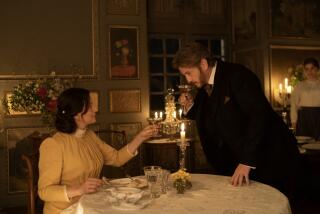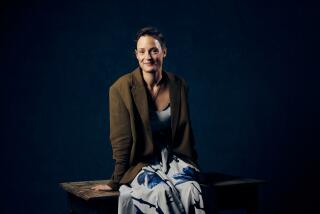No Clear Vision in Portrait of Infamous Chatelaine of Versailles
- Share via
History has not been kind to Marie Antoinette. Born Maria Antonia, youngest daughter of the empress of Austria, executed as the deposed queen of France and widow of Louis XVI, she has become in our historical imagination a cartoonish figure, all powdered wigs and gargantuan dresses, a regal strumpet who danced while France suffered and suggested that her country’s starving citizens eat cake--or, at the very least, brioche.
The same historical myopia, according to Evelyne Lever, author of a new biography of Marie Antoinette, has left us believing that the queen was either a scarlet woman who raided the bedrooms of the court and the purse of the king or a guileless, enthusiastic champion of her adopted country, devoted to her children and husband. But neither, as Lever asserts in “Marie Antoinette: The Last Queen of France,” is an accurate depiction.
Marie Antoinette, she argues, was a complicated woman, never adequately prepared for the political and personal tumult she was to endure in a court so different from the one in which she had grown up. When she arrived in France from Austria in May 1770 at age 14 to marry the dauphin, she had no one to ease her transition, let alone teach her to navigate the intricacies of the court and the French aristocracy. (Those few advisors who did travel with her were beholden to her mother, Maria Theresa, and acted as the empress’ spies in the French court.) As dauphine and then as queen, “Marie Antoinette was ignorant in the art of humoring people,” Lever tells us. “Elderly people bored her. She ignored them. . . . Nothing could have made a worse impression in a court that was used to respecting customs.” Marie Antoinette tended to withdraw from public occasions, preferring the company of a few select (and envied) friends and the intimacy of Petit Trianon, her “perfectly proportioned pleasure house” on the grounds of Versailles.
Relying heavily on letters, diaries and memoirs from the queen and her contemporaries, Lever recounts the goings-on at Trianon--and, for that matter, in the rest of Marie Antoinette’s busy life. We are privy to royal minutiae--detailed accounts of the long, drawn-out consummation of the dauphins’ marriage; the queen’s did-she-or-didn’t-she affair with Count Axel Fersen, a Swedish diplomat; her bouts with homesickness coupled with her often blatant attempts to manipulate state politics; and even the true history of that “let them eat brioche” line. (The quote was originally recounted by Rousseau in his “Confessions” and, according to Lever, was never made by the queen.) As the Bastille falls in a “carnival of horror and revolutionary exhilaration,” as Louis XVI negotiates again and again for the safety of his family in the new Republican France, Lever finds herself in an interesting position. While Marie Antoinette was at the center of this political and social revolution, Lever must reconcile the fact that the queen was by-and-large apolitical and maintained (though she did intervene in her husband’s affairs) that she had little interest in, or skill at, politics.
“I know that . . . I have very little influence on the king’s thinking,” she told her brother, Joseph II of Austria. “Without any ostentation or lies, I let the public believe that I have more influence than I really do because if I did not make them think so, I would have even less.” Confronted with this stance, the reader is left wondering what to make of a woman who hated politics but became a symbol for both the political triumphs and tragedies of her adopted country.
Lever never unravels this conundrum, nor does she ever offer a clear vision of who the queen truly was. Marie Antoinette comes across as both a heroine and a debaucher, a lover and a foe of politics, but Lever never adds up the pieces or distinguishes among them. And thus “Marie Antoinette: The Last Queen of France” suffers from a near-fatal case of split personality, as a mix of fact and supposition, with little room for reasoned psychological analysis--a task that Amanda Foreman does far better in her biography of England’s Lady Georgiana Spencer.
Marie Antoinette was guillotined on an October morning in 1793, her bleeding head held aloft for the crowds to see. “After her death,” Lever writes, “Marie Antoinette entered the world of legend and became a mythic figure. We seek to penetrate the secrets of her romantic and tragic life.” While penetrating these secrets, Lever is only partially successful in rescuing France’s last queen from the oppressive weight of stereotype and sensationalization.
More to Read
Sign up for our Book Club newsletter
Get the latest news, events and more from the Los Angeles Times Book Club, and help us get L.A. reading and talking.
You may occasionally receive promotional content from the Los Angeles Times.






